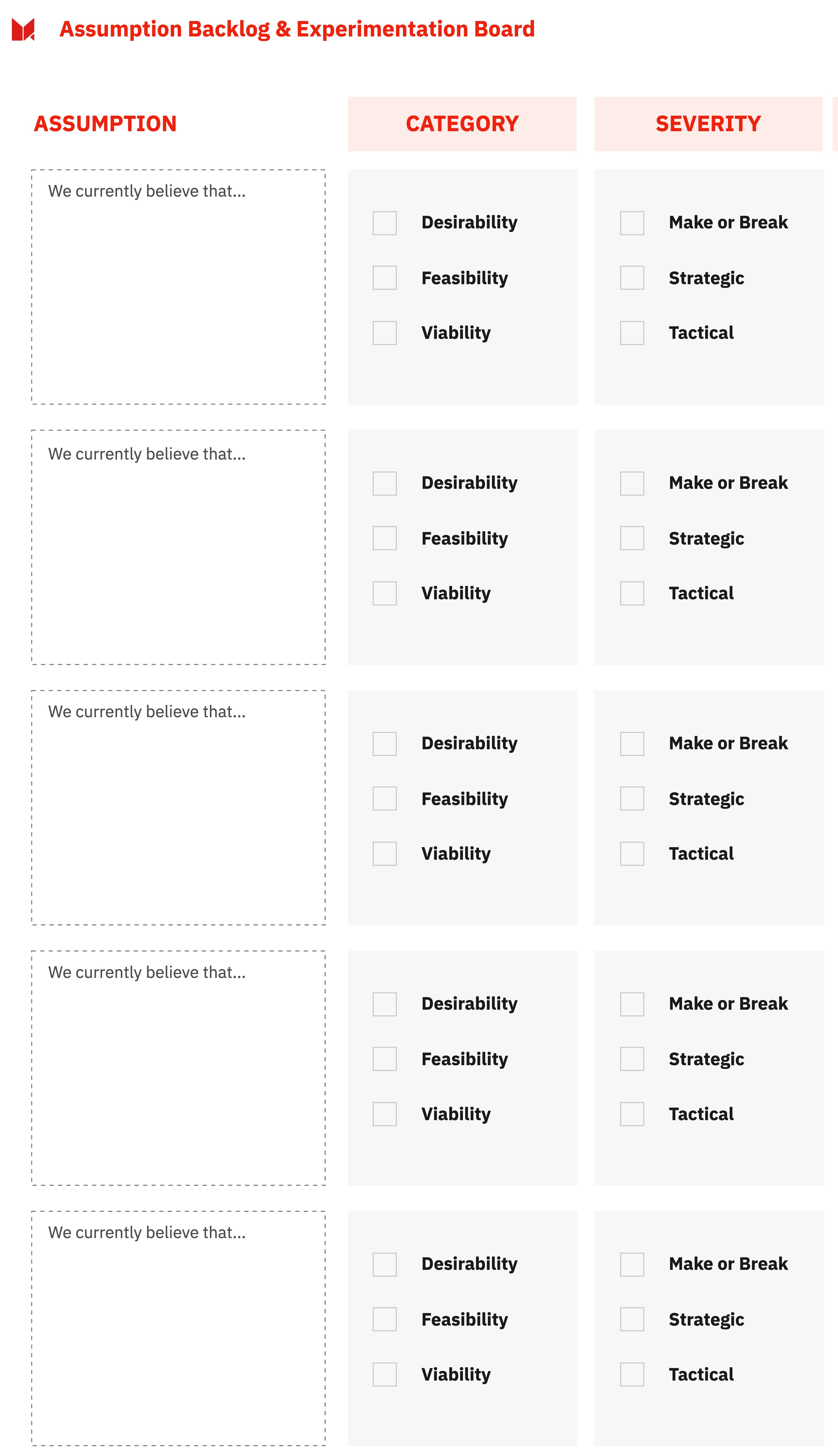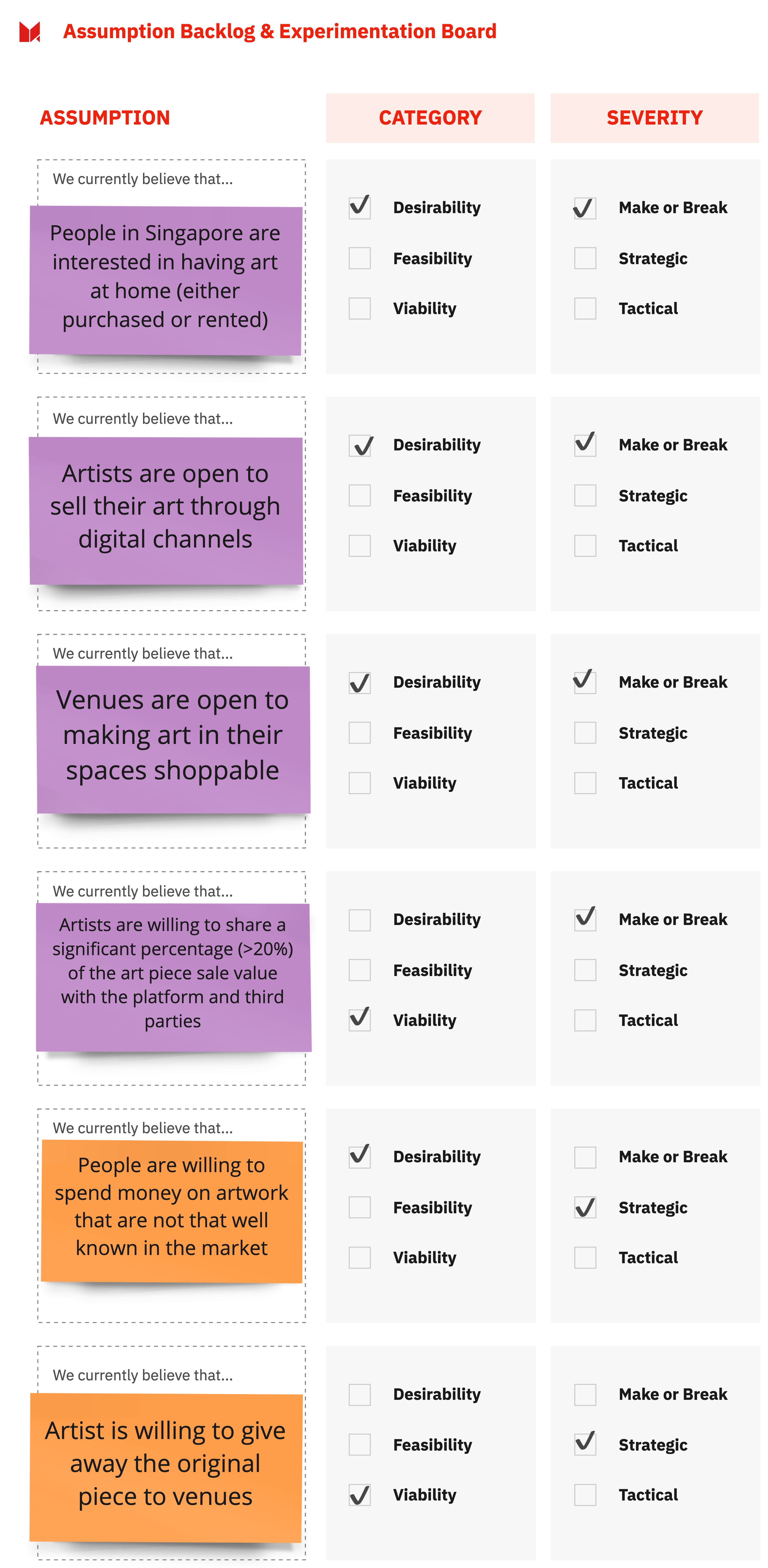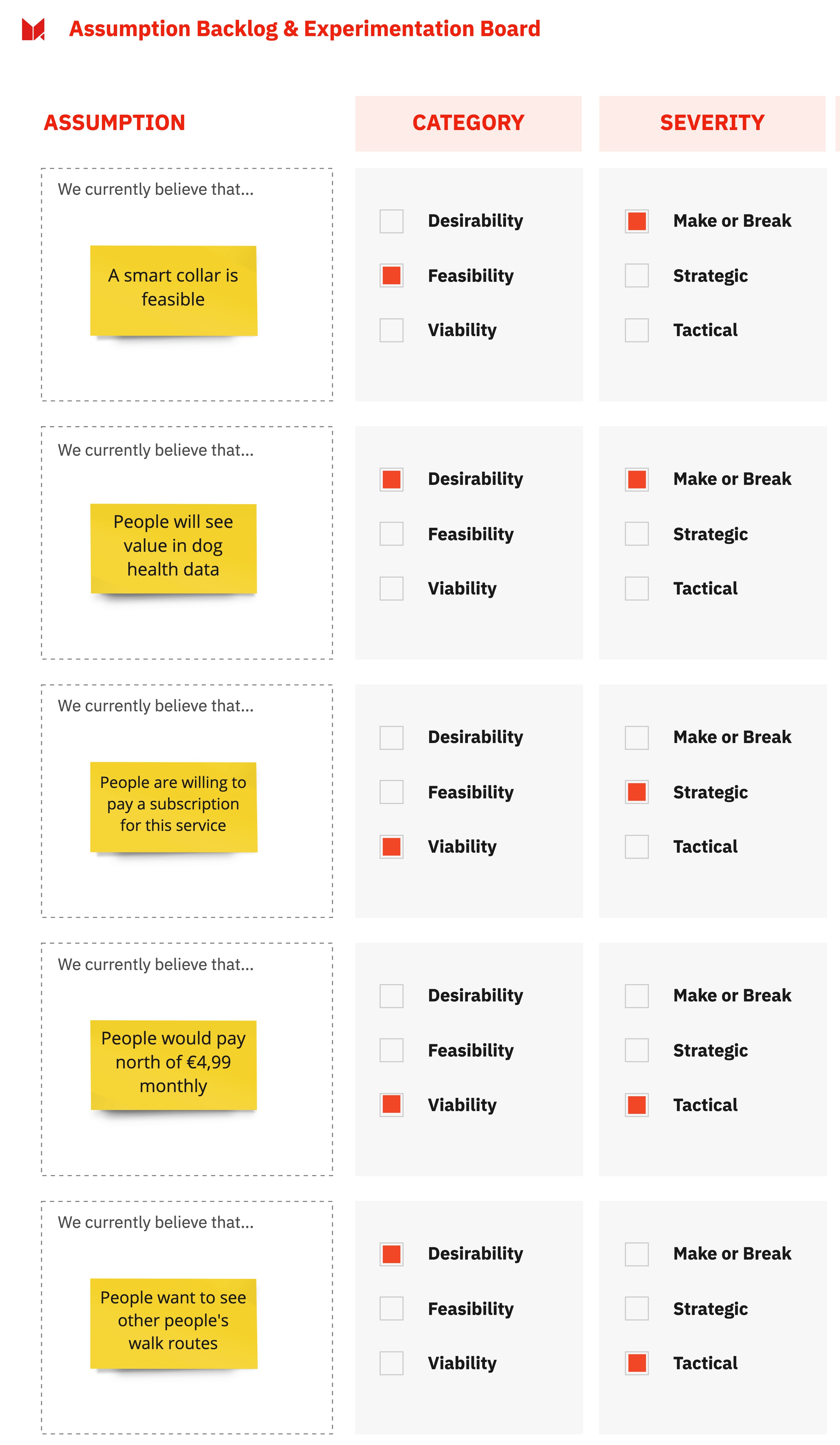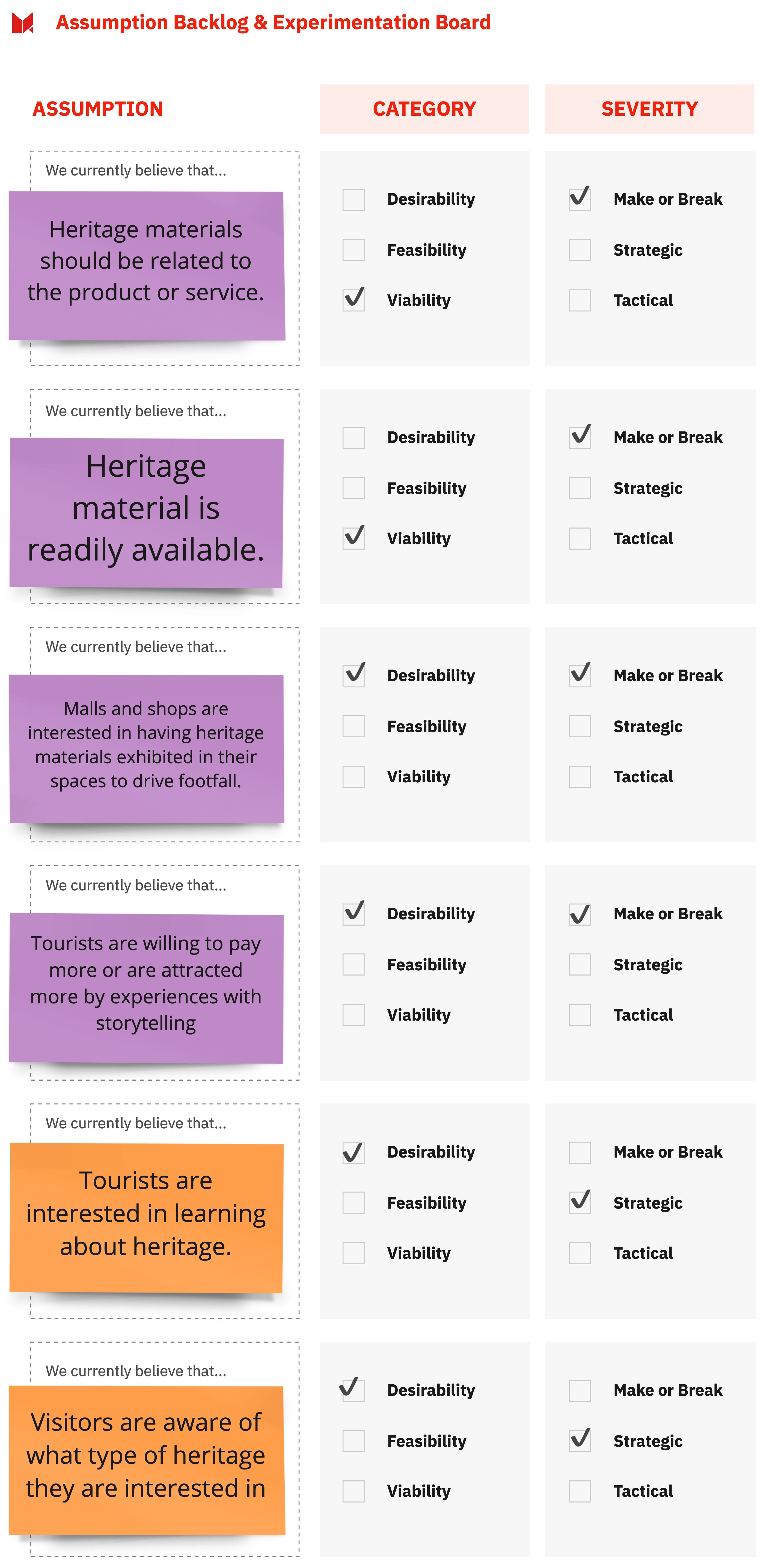¶ Assumption Mapping
¶ What it is
Now that we have used different ways of identifying assumptions and risks in our concepts, we need to evaluate them to set clear validation priorities. For this, we use the assumption map, which allows us to categorise them regarding their impact and angle so that we may prioritise and design experiments from there.
¶ Why it is useful
Any concept might have many hidden assumptions and risks that get unearthed, yet not all have the same priority. Some are Make or Break, meaning ignoring those can kill the whole concept, while others may be more tactical, hence easy to iterate around. The assumption map helps the team agree on a common view and plan the experimentation with a clear mind.
¶ When to use it
Whenever you are looking to run an experimentation process, it should be rooted in an assumption map to inform it.

¶
¶ How is it done
- Prepare a workshop board with the Assumption Backlog template - one for each concept.
- Run a session during which the team first cycles through all the assumptions, hypotheses, and risks, clusters them, and removes and duplicates.
- As a second step in the session, the team categorises every assumption in its category - Desirability (Do customers want this?), Feasibility (Can it be done?) and Viability (Can we make money with it?).
- Then, ask the team to discuss and categorise the severity of the impact of the assumption (“Make or Break” = The concept needs to be scrapped if proven wrong; “Strategic” = Some aspect needs to be pivoted if proven wrong; “Tactical” = Some element needs to be iterated on if proven wrong)
- Fill the assumptions into the Assumption Backlog in order from “Make or Break” to “Tactical” and from “Desirability” to “Viability.”
¶ Do's & Don't
Do's
- Try to visualise what you will do if an assumption is proven wrong before choosing a severity level.
Don't
- Don’t limit yourself to just a subset of hypotheses because there are too many. Instead, give the time to walk through everything to ensure you properly understand your playing field.
¶ Tools needed
- Whiteboard (physical or virtual)
- Post-it notes (physical or virtual)
- Identified Assumptions, Hypotheses and Risks
- Assumption Backlog Template
¶
¶ Example


